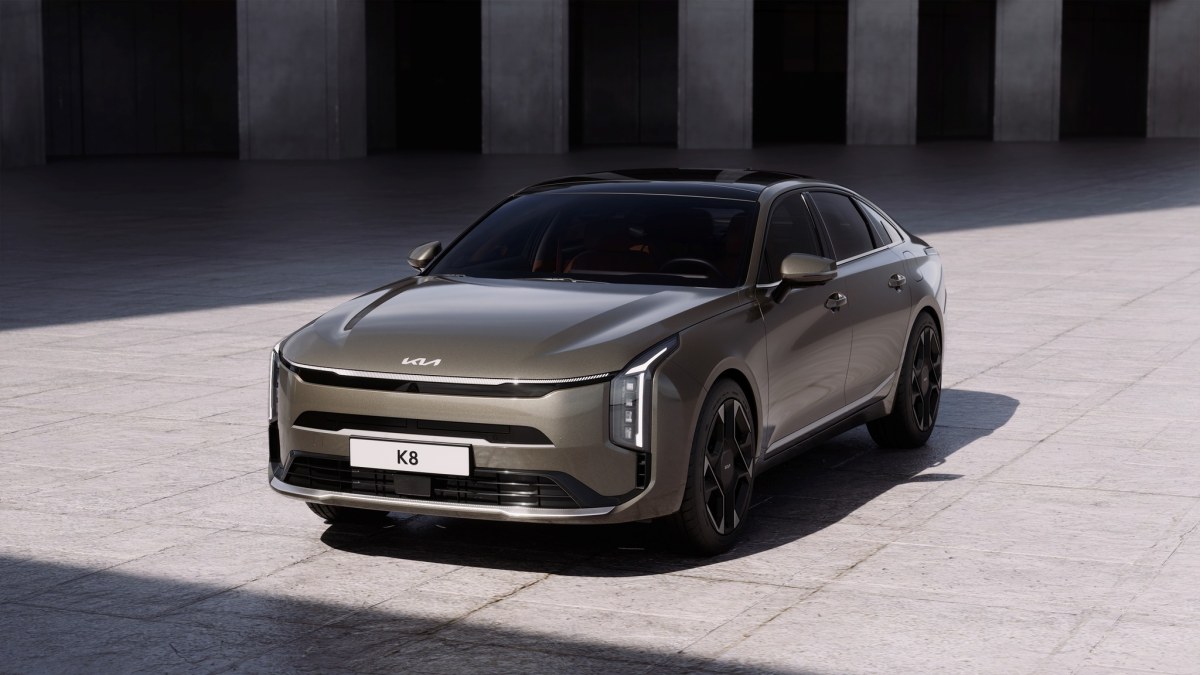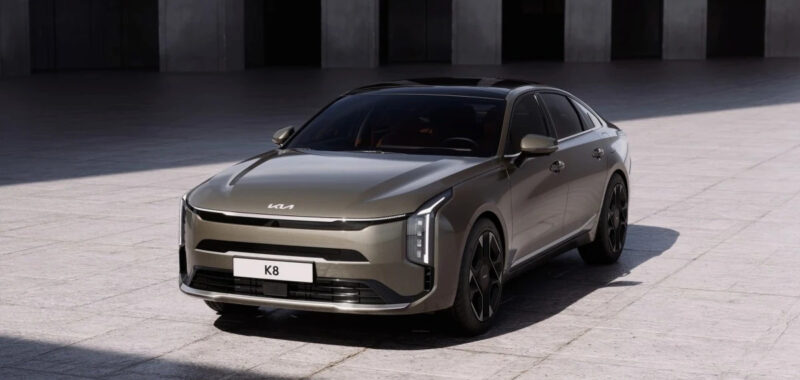
Remember the Kia Cadenza? The automaker launched the upscale full-sized sedan as the K7 in its South Korea home market in 2009, bringing it to the U.S. in 2013 with a new name and a mission to take on stalwarts like the Toyota Avalon and Nissan Maxima. It lasted into its second-generation here, retreating from our shores at the end of the 2020 model year. In 2021, Kia debuted the successor K8 with a fastback rear and a much plusher interior. Three years in, the K8’s received its first mid-cycle refresh, the new front fascia making a firm break with predecessors, the interior getting even nicer.
Sculpting on the front and rear bumpers stretches overall length by 1.4 inches, the only change in dimension. Coming into line with the company’s global design language, Star Map lighting highlights the front end. Between those vertical illuminations, the full-width LED at the top, chrome accent strip at the bottom, and body-colored faceplate in between establish a strong focus on width. Two programs, Dynamic Welcome Lighting and Dynamic Escort Lighting, work the lighting through various patterns depending on whether the occupants are entering or exiting the sedan.
Designers refined the instrument panel, center console, and tunnel area, the only additive touch being a four-spoke steering wheel instead of a three-spoke wheel. The climate controls hold onto their buttons and knobs, the panel part of a flatter IP with more leather and bolder swathes of color. Along the tunnel, the former pocket beneath the HVAC controls is now a wireless charging pad for two phones. Behind that, the knurled rotary controller sits on a flat panel instead of one canted up toward the driver, next to a fingerprint authentication sensor, and the cupholders are now hidden under a cover. Final flourishes include UV-C sterilization in the center armrest, dynamic ambient lighting for the curved display, and dynamic airbags in the passenger’s seat that respond to vehicle movements.
The available technology options have trickled down from the luxury class, including augmented reality navigation, a suspension that reads the road ahead to pre-adjust the dampers, body motion control that cuts down on pitch during highway acceleration, and active noise control through a Meridien audio system.
The base engine is a 2.5-liter four-cylinder making 195 horsepower and 183 pound-feet of torque, the premium option a 3.5-liter V6 producing 296 hp and 265 lb-ft, the sixxer offering the choice of all-wheel drive. The powertrain menu continues with a 3.5-liter version running on liquid propane, and the hybrid option of a 1.6-liter making a combined 227 hp and 258 lb-ft. South Korean prices converted into dollars range from about $27,000 to about $37,000.

